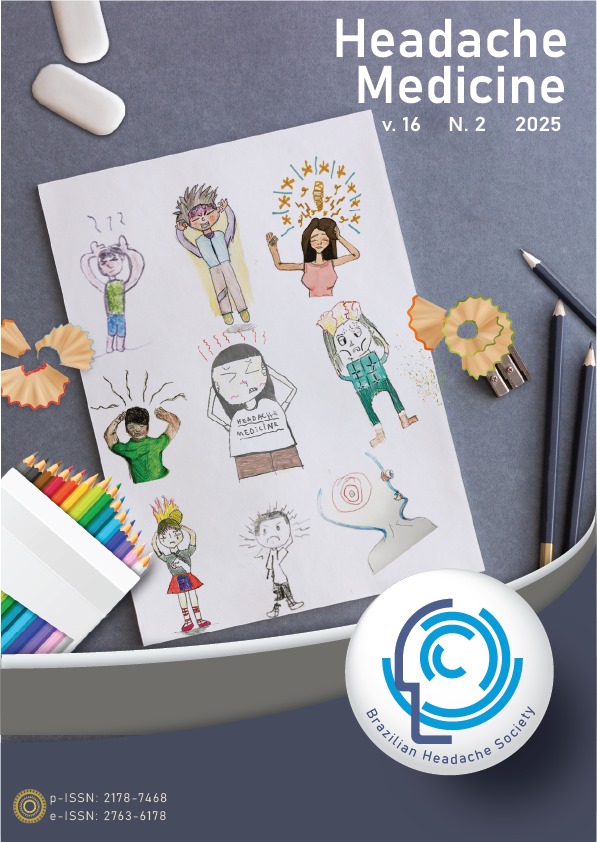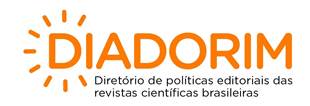Addressing sick building syndrome and its connection to headache disorders
Views: 368DOI:
https://doi.org/10.48208/HeadacheMed.2025.14Keywords:
Headache, Air pollution, Sick building syndrome, Carbon dioxide, Occupational health, PresenteeismAbstract
Introduction
Sick Building Syndrome (SBS), a term introduced by the World Health Organization in 1983, refers to the occurrence of acute health and comfort issues in individuals occupying specific indoor environments without an identifiable clinical cause. Among the most commonly reported symptoms are headaches, particularly migraines and tension-type headaches, which significantly affect daily functioning and workplace productivity.
Review
This review examines the primary environmental, chemical, biological, and psychosocial factors contributing to SBS and their influence on the onset and exacerbation of headaches. Poor indoor air quality, inadequate ventilation, and elevated carbon dioxide (CO₂) levels are identified as major physical factors. CO₂ concentrations above 1000 ppm are associated with impaired cognitive function, cerebral vasodilation, and the onset of headaches. Exposure to volatile organic compounds from office materials and cleaning agents, as well as biological contaminants such as mold and dust mites and electromagnetic radiation, is also implicated. In parallel, psychosocial elements such as occupational stress, poor ergonomics, and limited access to natural light exacerbate headache symptoms. The cumulative effect of these stressors contributes not only to physical discomfort but also to decreased performance and increased presenteeism. Preventive measures include improving ventilation systems, implementing green building practices, regulating humidity levels, implementing ergonomic interventions, and promoting mental well-being in the workplace.
Conclusions
SBS is a complex occupational health issue strongly associated with headache disorders. Addressing its multifactorial causes through integrated environmental and organizational strategies is essential for enhancing employee health, reducing headache incidence, and improving productivity. Tackling SBS represents both a health imperative and a strategic investment in workplace sustainability.
Downloads
References
Finnegan MJ, Pickering CA, Burge PS. The sick building syndrome: prevalence studies. BMJ 1984;289:1573–5. Doi:10.1136/bmj.289.6458.1573. DOI: https://doi.org/10.1136/bmj.289.6458.1573
Riesenberg DE, Arehart-Treichel J. “Sick building” syndrome plagues workers, dwellers. JAMA 1986;255:3063. DOI: https://doi.org/10.1001/jama.1986.03370220021005
Niza IL, de Souza MP, da Luz IM, Broday EE. Sick building syndrome and its impacts on health, well-being and productivity: A systematic literature review. Indoor and Built Environment 2024;33:218–36. Doi:10.1177/1420326X231191079. DOI: https://doi.org/10.1177/1420326X231191079
Tietjen G, Khubchandani J, Ghosh S, Bhattacharjee S, Kleinfelder J. Headache symptoms and indoor environmental parameters: Results from the EPA BASE study. Ann Indian Acad Neurol 2012;15:95. Doi:10.4103/0972-2327.100029. DOI: https://doi.org/10.4103/0972-2327.100029
Husøy A, Katsarava Z, Steiner TJ. The relationship between headache-attributed disability and lost productivity: 3 Attack frequency is the dominating variable. J Headache Pain 2023;24:7. Doi:10.1186/s10194-023-01546-9. DOI: https://doi.org/10.1186/s10194-023-01546-9
Bourbeau J, Brisson C, Allaire S. Prevalence of the sick building syndrome symptoms in office workers before and after being exposed to a building with an improved ventilation system. Occup Environ Med 1996;53:204–10. Doi:10.1136/oem.53.3.204. DOI: https://doi.org/10.1136/oem.53.3.204
Bourbeau J, Brisson C, Allaire S. Prevalence of the sick building syndrome symptoms in office workers before and six months and three years after being exposed to a building with an improved ventilation system. Occup Environ Med 1997;54:49–53. Doi:10.1136/oem.54.1.49. DOI: https://doi.org/10.1136/oem.54.1.49
Mansor AA, Abdullah S, Ahmad AN, Ahmed AN, Zulkifli MFR, Jusoh SM, et al. Indoor air quality and sick building syndrome symptoms in administrative office at public university. Dialogues in Health 2024;4:100178. Doi:10.1016/j.dialog.2024.100178. DOI: https://doi.org/10.1016/j.dialog.2024.100178
González-Díaz SN, Hernández-Salcido GJ, de Lira-Quezada CE, Cantú-Hernández JA, Macouzet-Sánchez C, Macias-Weinmann A, et al. Sick building syndrome: do outdoor pollutants and pollen affect it? Frontiers in Allergy 2024;5. Doi:10.3389/falgy.2024.1383079. DOI: https://doi.org/10.3389/falgy.2024.1383079
Vafaeenasab MR, Morowatisharifabad MA, Taghi Ghaneian M, Hajhosseini M, Ehrampoush MH. Assessment of Sick Building Syndrome and Its Associating Factors Among Nurses in the Educational Hospitals of Shahid Sadoughi University of Medical Sciences, Yazd, Iran. Glob J Health Sci 2014;7. Doi:10.5539/gjhs.v7n2p247. DOI: https://doi.org/10.5539/gjhs.v7n2p247
Camelia A. Sick Building Syndrome Dan Indoor Air Quality. Jurnal Ilmu Kesehatan Masyarakat 2011;2:79–84.
Pardo A, Israeli E. The Sick Building Syndrome as a Part of the Autoimmune (Autoinflammatory) Syndrome Induced by Adjuvant. Autoimmune Disorders, Wiley; 2024, p. 155–66. Doi:10.1002/9781119858430.ch15. DOI: https://doi.org/10.1002/9781119858430.ch15
Phipps RA, Sisk WE, Wall GL. A comparison of two studies reporting the prevalence of the sick building syndrome in New Zealand and England. N Z Med J 1999;112:228–30.
Silva JS e, Fernandes MA. Validation of the Brazilian version of the questionnaire for detection of sick building syndrome. International Journal of Occupational Safety and Ergonomics 2023;29:765–72. Doi:10.1080/10803548.2022.2082129. DOI: https://doi.org/10.1080/10803548.2022.2082129
Crawford J, Bolas S. Sick building syndrome, work factors and occupational stress. Scand J Work Environ Health 1996;22:243–50. Doi:10.5271/sjweh.138. DOI: https://doi.org/10.5271/sjweh.138
Begasse de Dhaem O, Sakai F. Migraine in the workplace. ENeurologicalSci 2022;27:100408. Doi:10.1016/j.ensci.2022.100408. DOI: https://doi.org/10.1016/j.ensci.2022.100408
Liphadzi M, Temidayo O, Aigbavboa CO, Thwala W, T P, Aliu J. GREEN BUILDING: AN ANTIDOTE TO SICK BUILDING SYNDROME MENACE IN AFRICA. Proceedings of the Creative Construction Conference 2023, Online: Budapest University of Technology and Economics; 2023, p. 632–44. Doi:10.3311/CCC2023-082. DOI: https://doi.org/10.3311/CCC2023-082
Downloads
Published
How to Cite
Issue
Section
License
Copyright (c) 2025 Marcelo Moraes Valença, Otávio Augusto de Oliveira Franco, Mario Fernando Prieto Peres, Juliana Ramos de Andrade (Author)

This work is licensed under a Creative Commons Attribution 4.0 International License.













